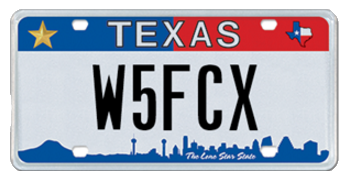They say a picture is worth a thousand words…

Over the Christmas break, we had a short but intense wind storm blow through. As can be seen here, the aluminum Spiderbeam mast did not fare well. Upon further investigation, the topmost guy line on the north side popped in the high wind, causing the antenna to come crashing down into the ground. This was most unexpected, so a deeper analysis was obviously needed to identify what caused the failure.
As usual, it was human error – my error. In the early days of putting up the Spiderbeam, I ran short of paracord for guy lines, so naturally I went to WalMart to pick something quick up. This turned out to be the root cause. I knew these WalMart cords were intended to be temporary, and thought I had replaced them all with MIL-SPEC 550 paracord. Turns out I missed one. These cords from WalMart were clearly not up to the task…
But what is required? My “gut estimates” on the wind load were apparently far from accurate enough, so I set out to figure out a better estimate of the actual wind loads to determine what a safe level of guying strength would be, which I outline below.
Fortunately, the HD Spiderbeam was not permanently damaged. The fiberglass pole that hit the ground was bent slightly as can be seen above, but this was more the result of the kevlar support ropes being twisted and pulling to one side – probably due to the force of it hitting the ground when the upper guy line snapped. I was able to relieve the support and reattach it, and the fiberglass pole recovered immediately.
Based on this, I’m very glad I purchased the heavy duty spiderbeam, which is turning out to be a beast that can take some punishment and keep coming back.
WIND LOAD and GUY LINE CALCULATIONS
After asking around and not getting much response on how to calculate the wind load and force that the mast and antenna are going to exert on the guy lines in high wind conditions (e.g., 100 MPH), I spent several hours researching this topic. It’s amazing what we learn as a result of this ham radio hobby, isn’t it?

After exhausting Google’s repository of free wind load and other calculator tools, and going in circles trying to decipher the theoretical sites about wind load on poles and other surfaces, I took a simpler approach by separating the problem into two parts: 1) the mast (pole) and 2) the antenna.
I downloaded a commercial post/pole wind load calculator (Excel spreadsheet for $67.50!). Its output is shown in the modified screen capture above, which I edited using Photoshop to add the conclusions and annotations.
I averaged the mast diameter at 4″ (0.37 meters). A 100 MPH wind exerts about 4.62 plf (pounds per linear foot) against the top 25′ of mast sections, plus 3.79 plf along the bottom 25′. This totals a pole wind load of about 210 pounds @ 100 MPH – that’s about the weight of an NFL wide receiver 🙂
Next, I found the HD Spiderbeam specs show a wind load surface of just less than 4 sq. feet (0.37 meters). I multiplied this area times the pressure (pounds per square foot) using the wind speed pressure table provided by K7NV shown below:

I used the highest of the figures at 31.4 Psf times the 4 square feet of antenna wind area, which exerts an amazing 125 pounds of additional force at the top of the mast system.
I estimate the sudden wind gust force at the top of the antenna to be less than the 335 pounds that a 100 MPH wind would exert, as the gusts probably were not that high.
So now I’m imagining a 335 pound NFL lineman running into this mast (at the top) during a major wind gust. This sort of analogy helps one realize the forces at play. And given this lineman is accelerating at up to 100 MPH, that must pack quite a punch!!
NEXT STEPS
So now I’m on my way to Version 2 of the Spiderbeam mast system to deal with this wind menace. V2 will include replacing the top 4 sections of aluminum mast sections that were either bent or potentially stressed by this event. I’ve also decided to replace all of the guy lines with a much higher grade line that’s designed specifically for antennas. This is what I selected.

I chose the Kevlar core rope because it has virtually no stretch, has the highest possible breaking strength (> 770 pounds) yet a small diameter (1/8″) that doesn’t add significantly to the wind load (or visually obscure my lake view substantially). Normally, these guy lines have less than 50 pounds of pressure applied to them – just enough to keep them tight and the mast straight and steady. We don’t want too much downward pressure on the telescopic mast sections or guy plates, as the entire mast must rotate from the bottom up.
The Dacron jacket provides UV protection for the Kevlar, greatly extending the life of this rope in the hot Texas summer sun.
So for now, I’m back to operating on the two inverted-V antennas and without the Spiderbeam. Of course, this also has me now seriously thinking about investing in a tower and even bigger antenna!
More as it develops in a few weeks time, after the new guy lines and mast sections arrive.

I think a 315 lbs object at 100 MPH is much different than 315 lbs of force on the antenna and support structure.